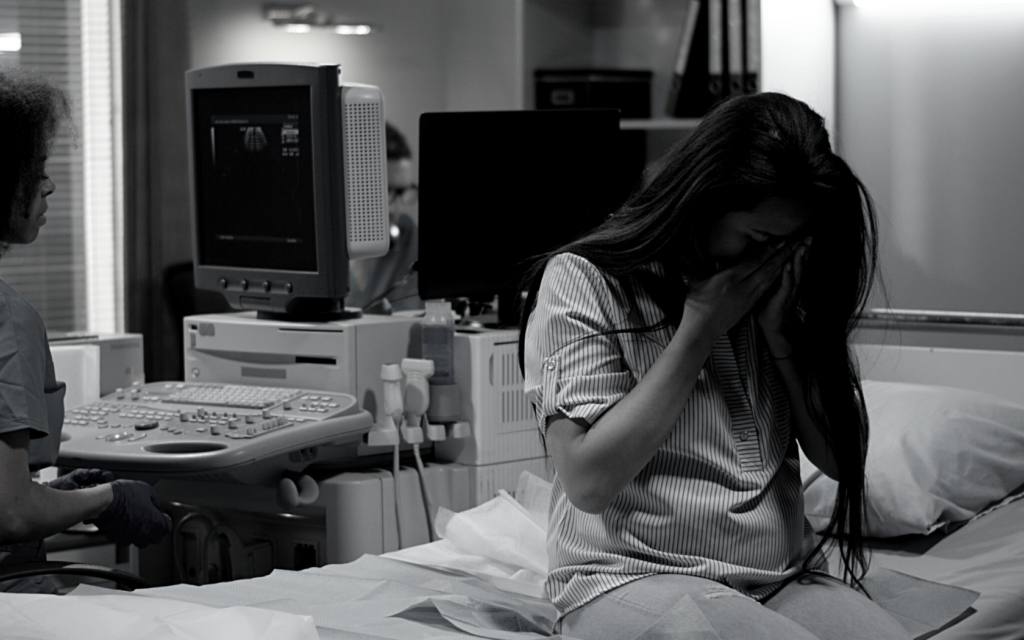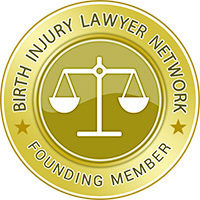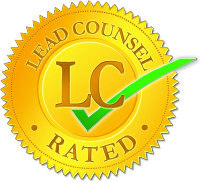“What you don’t know can’t hurt you” That certainly doesn’t apply to undiagnosed preeclampsia. If you have preeclampsia, you need to know. Your life and your baby’s life could depend on it.
In this article, we’ll dive into the key facts about preeclampsia, and what happens if the doctor leaves preeclampsia undiagnosed and untreated.

What’s Preeclampsia?
Preeclampsia is a high blood pressure complication that can happen during pregnancy. It’s a serious condition that can have severe consequences when left untreated. It most often occurs after the 20th week of pregnancy. But it can happen earlier, or up to six weeks after delivery.
According to March of Dimes, preeclampsia and its complications cause between 10 to 15 percent of maternal deaths worldwide. It affects 5 to 8 percent of pregnancies in the U.S.
How Does Preeclampsia Develop?
The exact cause of preeclampsia is unknown. A combination of genetic, vascular, and immune factors comes into play. The placenta often plays a starring role in preeclampsia’s development.
One reason why a woman might develop preeclampsia is because there’s inadequate blood flow to the placenta. This can trigger a series of events that result in high blood pressure and damage to organs. An abnormal immune response could also cause preeclampsia during pregnancy.
If left untreated, preeclampsia can progress to eclampsia. Eclampsia can cause seizures, organ damage, and even death for both the mother and baby. This is why undiagnosed preeclampsia is so dangerous. Both mothers and their doctors should know the signs and symptoms. We’ll discuss what those are below.
Signs & Symptoms of Preeclampsia
Pregnancy comes with plenty of symptoms, like nausea, heartburn, and fatigue. So it’s possible for both mothers and doctors to write off signs of preeclampsia as “normal” pregnancy woes.
However, one hallmark sign of preeclampsia is a sudden change in blood pressure. If blood pressure reaches 140/90 mm Hg or higher, that’s cause for concern. Doctors should monitor a woman’s blood pressure during the entire pregnancy.
Other possible symptoms include:
- Proteinuria. This is just a fancy term for excess protein in the urine. It can show up in a urine test. But not all women with preeclampsia have proteinuria.
- Swelling. The face, hands, and feet may swell. The change can be sudden and severe.
- Headaches. Some women get intense, persistent headaches.The headaches can cause blurred vision, and make a woman see spots or flashing lights.
- Abdominal pain. Pain in the upper right side of the abdomen, below the ribs, could be a sign that preeclampsia is affecting the liver. This is more common with severe cases.
- Reduced urine output. There’s less urine production, and the woman won’t need to urinate often.
- Nausea or vomiting. These are also signs of morning sickness, a “normal” symptom of pregnancy. But when the nausea or vomiting is persistent, it could be a sign of preeclampsia.
- Vision changes. Some women experience blurry vision, sensitivity to light, or temporary loss of vision.
- Difficulty breathing. This includes shortness of breath or rapid breathing.
- Rapid weight gain. Weight gain in pregnancy is normal. But preeclampsia can bring on a sudden gain of 2 to 5 pounds in a week.
- Other symptoms. Fatigue, confusion, and dizziness.
Now, with so many possible signs, you might wonder how doctors could miss preeclampsia. But that’s part of the problem–there are many symptoms. And many of them overlap with other pregnancy issues.
Also, some women with preeclampsia have no symptoms at all. There may be no sign of the disorder until it has progressed further.
Risk Factors for Preeclampsia
This difficulty with identifying symptoms is what makes undiagnosed preeclampsia possible. At the same time, doctors are trained to develop symptom discernment. They should also know whether a patient has a higher risk of developing preeclampsia.
Here are some of the risk factors for preeclampsia:
- Having twins (or other multiples)
- First pregnancy
- Using fertility treatments to get pregnant
- Being older than 35
- Having preeclampsia in a previous pregnancy
- Family history of preeclampsia
- Having high blood pressure
- Having kidney disease, obesity, diabetes, or an autoimmune disease
Having little or no access to adequate prenatal care is also a risk factor. Undiagnosed preeclampsia sometimes happens because a woman doesn’t see a doctor on a regular basis.
What Happens if Preeclampsia Goes Undiagnosed?
Doctors can’t (or won’t) treat a condition they don’t believe their patient has. Untreated, undiagnosed preeclampsia won’t resolve on its own. Without treatment, it can snowball into serious complications and permanent injuries.
Complications from preeclampsia can include:
- Eclampsia. A severe form of preeclampsia involves seizures and organ damage.
- HELLP syndrome. Another variant of severe preeclampsia. HELLP stands for Hemolysis (breakdown of red blood cells), Elevated Liver enzymes, and Low Platelet count.
- Organ damage. Preeclampsia can cause liver and kidney failure.
- Premature birth. Early delivery may be necessary to protect the health of the mother and baby. But premature birth can go hand in hand with respiratory distress syndrome, infections, and developmental delays.
- Fetal growth restriction. The baby can be born small and have a low birth weight.
- Placental abruption. The placenta separates from the uterine wall before delivery and causes heavy bleeding.
- Long-term cardiovascular diseases. Women with preeclampsia might develop high blood pressure, heart disease, and stroke later in life.
Undiagnosed Preeclampsia Can Lead to Stillbirth
It’s rare, but undiagnosed preeclampsia can cause a baby to pass away shortly before birth. That was the case for Miranda, a mother who shared her story with the Centers for Disease Control and Prevention.
Miranda had a “normal” pregnancy but began to experience symptoms of preeclampsia late in the 3rd trimester. She had intense swelling in her ankles and lower back pain. Then the swelling spread to her face and hands. She had some nausea and pain in her upper stomach area as well.
But those symptoms weren’t enough to trigger the “preeclampsia alarm” for her healthcare providers. Her ailments were mild, and both Miranda and doctors chalked them up to traditional pregnancy problems. After all, her blood pressure wasn’t high. She didn’t have protein in her urine.
But the morning she completed 41 weeks of pregnancy, Miranda realized something was wrong. Her baby wasn’t kicking or moving at all. He had been active the night before. She rushed to the hospital, and her son Adrian was stillborn. He had died in the womb from complications of undiagnosed preeclampsia.
Miranda wishes her doctors had warned her about preeclampsia. Had she known that her mild symptoms were red flags, she might have gone to the hospital earlier. But Miranda’s doctors never mentioned preeclampsia or explained its symptoms to her.

Can Undiagnosed Preeclampsia Constitute Malpractice?
If you or a loved one were injured because of undiagnosed preeclampsia, a healthcare provider could be at fault. But certain elements have to be present for you to sue for malpractice.
- The provider’s action or inaction has to fit the legal definition of negligence. This means they didn’t do what any competent doctor would have done. (For example, they failed to run tests or treat you when you presented symptoms of preeclampsia.)
- The undiagnosed preeclampsia harmed you or your loved one in a significant way. (For example, your baby was stillborn).
- The statute of limitations hasn’t run out.
Every case is unique. So it’s best to discuss details with a lawyer before you decide to sue your doctor. We invite you to speak with our birth injury lawyers free of charge to get started.












